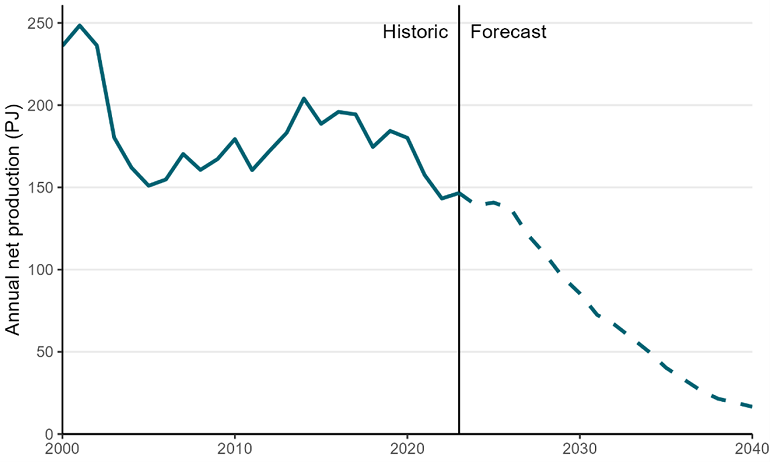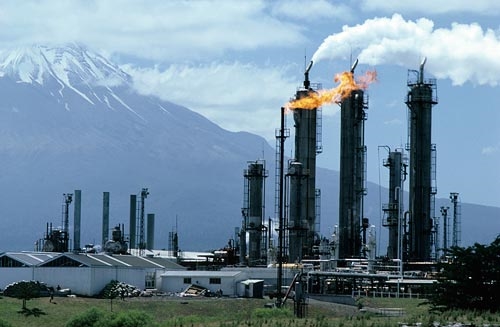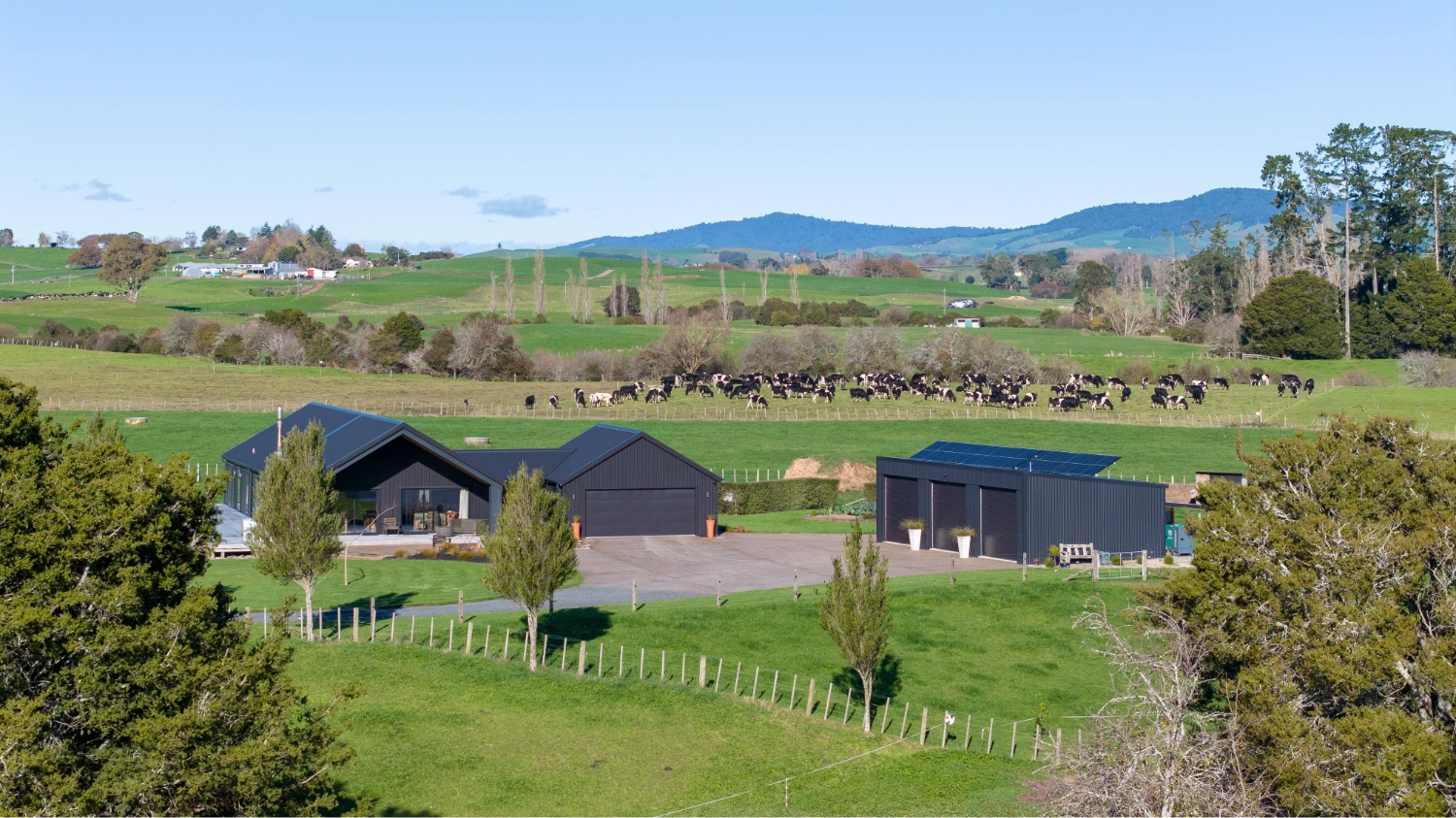Declining reserves, shrinking production, rising contract volatility, and steep price escalations are converging to create a perfect storm for gas-reliant businesses. Now, more than ever, it is time to evaluate and accelerate the transition to commercial solar and complementary electrification strategies.
Below is a snapshot of where things stand today — and why the case for solar (and other low-carbon alternatives) is becoming increasingly compelling.
Gas supply is shrinking - 27% decline in a single year
- In its June 2025 media release, MBIE reported that New Zealand’s proven plus probable (2P) natural gas reserves fell from roughly 1,300 PJ in 2023 to 948 PJ in 2024, a drop of 27%. *
- A significant portion of that decline (about 234 PJ) reflected operators downgrading their estimates of what is economically extractable.
- Meanwhile, gas delivered from fields declined ~22 % year-on-year in 2024 compared to 2023.
- In the latest Gas Industry Quarterly Report (June 2025), production into open-access pipelines dropped from 136 PJ to 106 PJ over one year.
These numbers confirm that the decline is not marginal — it’s structural, and accelerating beyond prior forecasts.
Earlier exit from gas supply forecasts
- Historically, many projections anticipated gas production falling below 100 PJ around 2029. But with the revised data, that threshold may be crossed as early as 2026.
- However, Rewiring Aotearoa believes that even MBIE’s revised outlook is optimistic, given persistent underperformance of drilling and development projects.
- In 2024, total production dropped by 20 %, representing the lowest output since 2011.

Prices Are Surging and Commercial and Industrial Users Are Feeling the Pain
Of the gas usage, industrial usage makes up about 35% (either for heat or as a feedstock), commercial usage is about 7%, electricity generation is about 29% and the remaining 10% is made up from residential households, schools, hospitals, and other buildings.
Declining supply and rising risk inevitably feed through into pricing and commercial and industrial customers are bearing the impact.

Double digit price increases across the board
- According to a BusinessDesk summary in June 2025, after inflation adjustment, commercial gas prices rose c.20.5%, industrial prices c.14.9%, and wholesale c.12.8%. ***
- In a recent BusinessNZ / BEC survey, more than one third of businesses reported gas price increases between 20% and 50%. A quarter said their prices had jumped between 50% and 100%, while the remainder reported increases exceeding 300%.
- The same survey showed that a quarter of respondents are now paying more than NZD 25 per GJ, a marked contrast to the $10–15/GJ range commonly seen in prior years.
- BusinessNZ goes further to note that prices have effectively more than doubled (100%+ increase) for many gas users over the past five years.
- Some commercial gas users claimed that planned contract renewals were facing further 15% hikes from retailers.
- One ZEN client highlighted an imminent doubling of pricing in their gas contract renewals for the coming year
Impacts on industrial operations
- Already, major industrial users are responding: fertiliser producer Ballance Agri-Nutrients (Kapuni plant) has flagged potential temporary shut-downs due to inability to secure affordable gas supply.
- The BusinessNZ / Optima survey suggests that many firms are adjusting operations, cutting staff, or scaling back production as a direct consequence of the energy cost pressures.
- Some large users report that gas is being reallocated to electricity generators (who are able to pay premium rates), resulting in supply constraints and upward pressure on prices. *RNZ
Escalating risk in contracts
- Many gas supply agreements incorporate pass-through of transmission, distribution, and carbon costs; thus commercial users are vulnerable to annual escalation on these fixed charges.
- The limited portion of gas traded on exchange (emsTradepoint) is small (≈5 % in 2025), so most pricing remains opaque and subject to bilateral negotiation.
- The structural risk of a “death spiral” looms: as some users exit or switch away from gas, fewer customers remain to absorb fixed network costs, pushing rates higher for those locked in.
- The Commerce Commission is consulting on changes to gas network charges that may further shift cost burdens in coming years.
In short: many commercial customers are already operating in a high-risk environment, and future contract renewals will come with even more uncertainty.
The Broader Ripples: Energy Markets, Emissions, and Supply Risk
Electricity markets and thermal dependence
With gas increasingly used to fill gaps when hydro, wind, or geothermal generation falters, electricity spot prices are exposed to gas price volatility.
In 2024, forced by low hydro lake levels, fossil fuel generation in New Zealand spiked +67% relative to 2023 between January and July — underlining how gas, coal, and diesel act as swing sources in dry periods.
That means commercial and industrial customers exposed to both gas and electricity pricing are doubly vulnerable.
Emissions regulation and the additional carbon cost pass-through
Gas consumers must also absorb carbon costs under the NZ Emissions Trading Scheme (ETS).
As time goes on, it may be that national energy policy will intensify around decarbonisation target commitments for 2030 and 2050, meaning that alternative low-carbon generation solutions (like solar) will become more attractive not only for direct cost savings and payback, but the indirect impact of compliance risk.
Risk of energy security and deindustrialisation
Industry voices warn that continuing on the current path is not sustainable. The BEC survey remarks that if nothing is done, “a major deindustrialisation crisis could escalate in the next two years.”
Several high-profile manufacturing and energy-intensive operations (e.g. paper, food processors, horticulture) say gas cost risk is a real existential threat.
Gas’s shrinking role undermines the notion that it can be relied on as a stable transitional fuel for business energy planning.
Why Now is the time to Evaluate Commercial Solar (and Electrification)
Given the structural constraints, rising cost, and risk dynamics around gas, solar solutions (with or without battery storage) deserve serious consideration — especially for commercial and industrial energy users. Below are the main reasons why:
Cost certainty and insulation from fuel volatility
Once a solar PV system is installed, the marginal cost of generation (sunlight) is zero. That means your energy price risk is largely shifted from volatile fossil inputs to predictable (or even subsidised) capital cost models.
You effectively lock in a portion of your energy needs at a stable rate, reducing exposure to future gas price inflation.
Alignment with electrification trends
As heavy heat loads, processes, and machinery shift to electric alternatives (heat pumps, electric boilers, resistive heaters, electric motors), solar becomes a more directly usable energy source on-site.
Solar + battery + smart control becomes a more seamless solution than trying to maintain hybrid gas-electric systems in a shrinking gas supply environment.
Demand charge and network value
Commercial users often face demand or capacity charges in their electricity bill structure. On-site solar (especially paired with storage) can shave peaks, reduce import from the grid, and shift loads — delivering additional financial value beyond energy alone.
ESG, market positioning, and resilience
From a sustainability and branding perspective, having your own renewable generation improves your environmental credentials, helps with procurement and investor expectations, and hedges against regulatory risk.
In a commercial climate where energy cost unpredictability may force cutbacks or shutdowns, solar offers a resilience buffer — you can maintain a baseline load even if broader gas supply becomes constrained.
Rapid deployment and modular scalability
Unlike gas field development (which takes years, large capital, approvals, etc.), solar projects can be planned, consented, and installed much more quickly. You can scale stepwise, test performance, and integrate with new load opportunities.

Strategic Considerations for Businesses Exploring Solar Now
To make the most of a transition toward solar or electrified operations, commercial customers should:
- Conduct a quick energy audit or feasibility assessment
Understand your load profile, peak demand, usage patterns, seasonal variations, and where electrification makes sense; ZEN will conduct a solar feasibility assessment with you for free to give you an indicative payback and cost/benefit overview. - Ensure you model out the cost of ‘do nothing’ the compounding cost forecasts need to be included in your capital expenditure scenarios
- Think ‘and’ not either / or
Don’t think in “gas vs solar” binary — partial solar, grid backup, biomass switch, maybe some residual gas. Having several energy sources will increase resilience and cost hedging. - There are so many options on financing products
Capital, leasing, power purchase agreements (PPAs), and other financing vehicles can dramatically shift the business case. And while we believe that owning your system will always serve you better in the long run, you don’t have to be constrained by that upfront - Look at grid export, storage, and control
Solar alone is good; solar + battery + intelligent load control is better. That setup helps manage peak demand, grid constraints, and time-of-use rates. - Engage in long-term energy planning
Don’t treat solar as a one-off project; integrate it into your 5–10 year energy strategy, considering emissions goals, energy security, and operational growth. - Mitigate stranded asset risks
If your investment in gas-based plant or infrastructure is becoming stranded, plan to gradually phase them out or repurpose the assets in concert with your solar transitions.
Conclusion: The time to act is now
The gas landscape for commercial and industrial users in New Zealand is under intensifying pressure: reserves are dwindling, output is falling faster than expected, and prices are skyrocketing. Many businesses are already feeling the pinch, and future contract renewals come with ever-larger risks and uncertainty.
In this environment, solar (and complementary electrification) is no longer just a “nice to have” — it’s a strategic imperative. It offers cost stability, grid resilience, alignment with decarbonisation, and a hedge against continued fossil fuel volatility.
If your business still relies heavily on gas, the time to explore and act is now. Every quarter you delay is one more quarter exposed to inflationary fossil fuel risk, unexpected supply shock, or contract renegotiation at the wrong time. And as solar generation supplants all other energy forms as the cheapest on earth, it’s never been a more commercially viable moment than right now to explore your operation being powered by the sun, in all her infinite glory.
Sources
Business Desk: https://businessdesk.co.nz/article/markets/gas-prices-increase-by-up-to-20
*MBIE: https://www.mbie.govt.nz/about/news/gas-supply-reducing-faster-and-sooner-than-previously-forecast
Rewiring: https://www.rewiring.nz/watt-now/a-bad-case-of-gas
Business Desk: https://newsroom.co.nz/2025/10/01/govts-damp-squib-energy-reforms-reject-8-of-10-review-recommendations/



